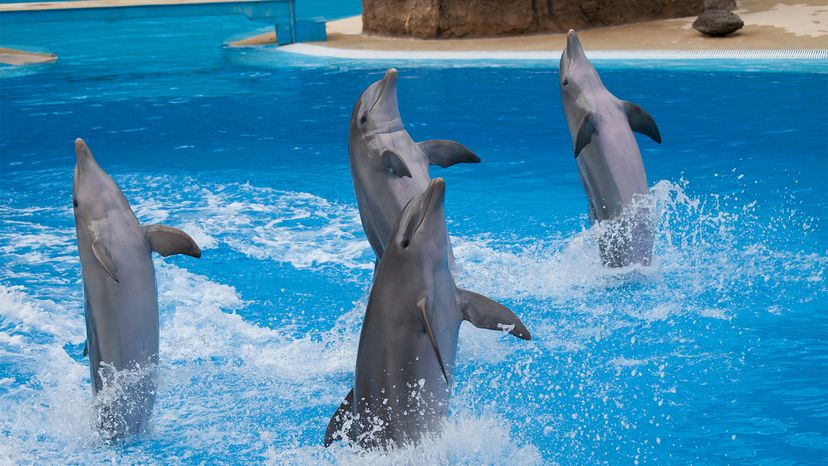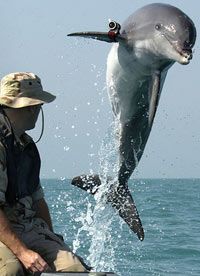
On May 18, 1983, while performing his song "Billie Jean," a human named Michael Jackson performed a dance move on national television that nobody had ever seen before. It was called the Moonwalk, and a lot of other humans all over the world lost their marbles over it.
The Moonwalk is an objectively cool move: It gives the illusion that the dancer is gliding effortlessly backward. It's not easy, but for a while in the 1980s, lots of people, from Anchorage to Calcutta, were trying Michael Jackson's signature trick.
Advertisement
Humans are highly intelligent, social animals, but we're not the only ones. Whales and dolphins have similar social wiring to our own and, it's recently been discovered, can collectively get super-excited about a dance move for a little while, just like we humans did when we first saw the Moonwalk.
In 1987, a particularly sociable wild bottlenose dolphin called Billie followed a regatta of sailboats from her home in the Port River near Adelaide in South Australia to a particularly polluted creek. She became trapped there, and a local marine mammal park rescued her and kept her with its five other captive dolphins for a few weeks before releasing her back to her home. In that time, the other dolphins at the park taught her to tail walk — a pretty common trick taught in dolphinariums — which is basically just Moonwalking for marine mammals.
So, Billie learned to pop out of the water by thrusting her tail back and forth, and "walking" backward on the surface of the water with her nose to the sky. For years afterwards, she would swim up to boats in the Port River and perform her trick. But what's weird is that other dolphins started doing it, too. Here's a YouTube video of Billie and her friends dancing it up and having some fun:
Though Billie died of kidney failure in 2009, a dolphin named Wave had picked up the trick and, through the years, nine of Bilie's dolphin buddies could regularly be seen doing the move. Tail-walking sightings tapered off after 2011, and once a particularly dedicated tail-walking enthusiast in the group died in 2014, the behavior lost favor with the Adelaide-area dolphins. Now only two dolphins in the area can be observed tail walking in the wild, but infrequently. For a few years, though, it was hot. It was a dolphin fad, just like the Moonwalk.
A 30-year study of this behavior, published on September 5, 2018 in The Royal Society's Biology Letters, details the social learning required of Billie to learn to tail-walk from the captive dolphins, and for her wild dolphin friends to learn it from her.
Cultural behavior hasn't been widely studied in whales and dolphins because it requires a significant amount of time to see trends in cetacean behavior, so this study is consequential because it spanned 30 years.
"I knew Billie's history and was able to track her behaviour and that of the other dolphins in the community over an extended period," says lead author Mike Bossley, manager of Science and Education for Whale and Dolphin Conservation, in a press release. "This enabled me to observe tail walking spread through the community and then its eventual fade away."
"Understanding more about the social transmission of behaviour will help us predict how different species may respond to changes in their environment," said Philippa Brakes, also from Whale and Dolphin Conservation, in the press release. "The rapid spread of socially learnt behaviours can operate much faster than the intergenerational process of natural selection, which can be an advantage or a disadvantage, depending on the type of behaviour transmitted."
Advertisement

